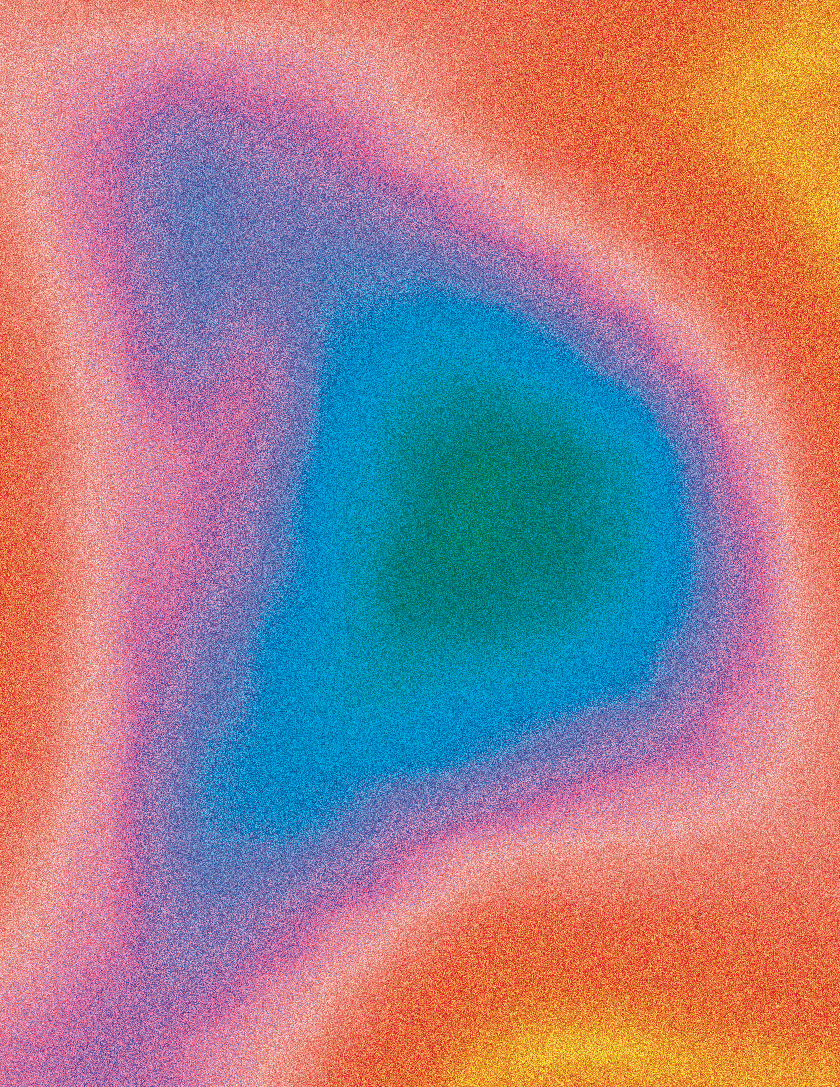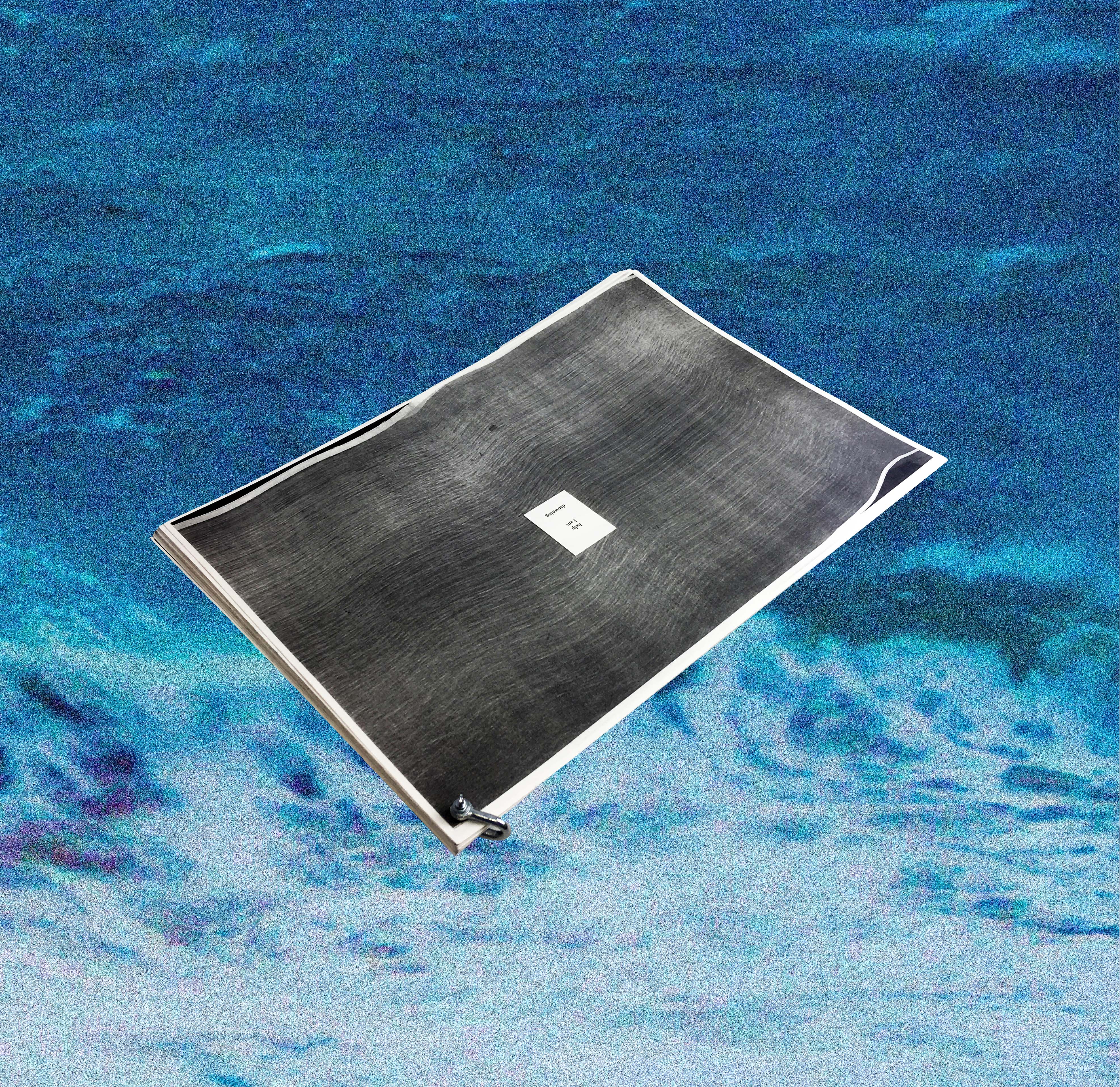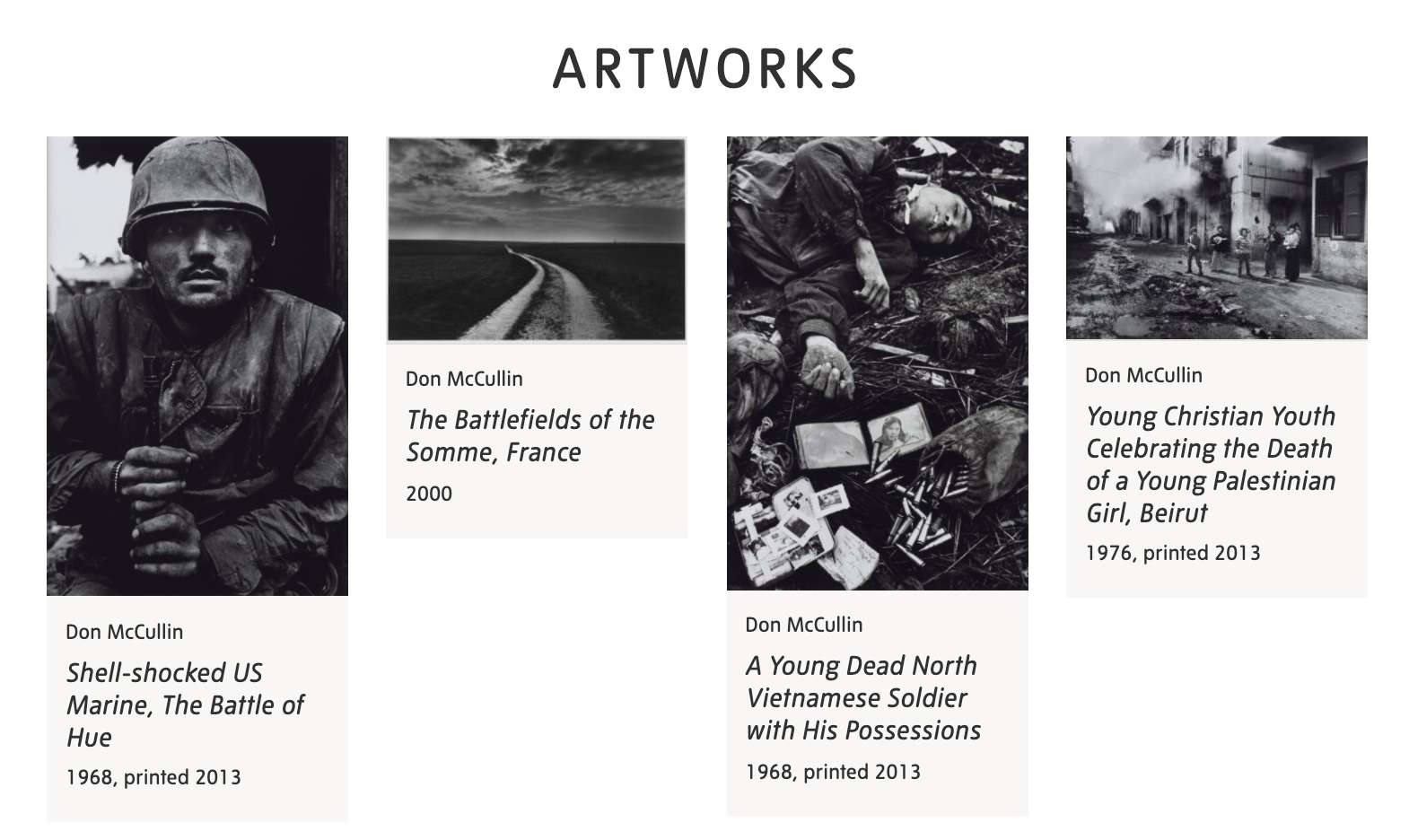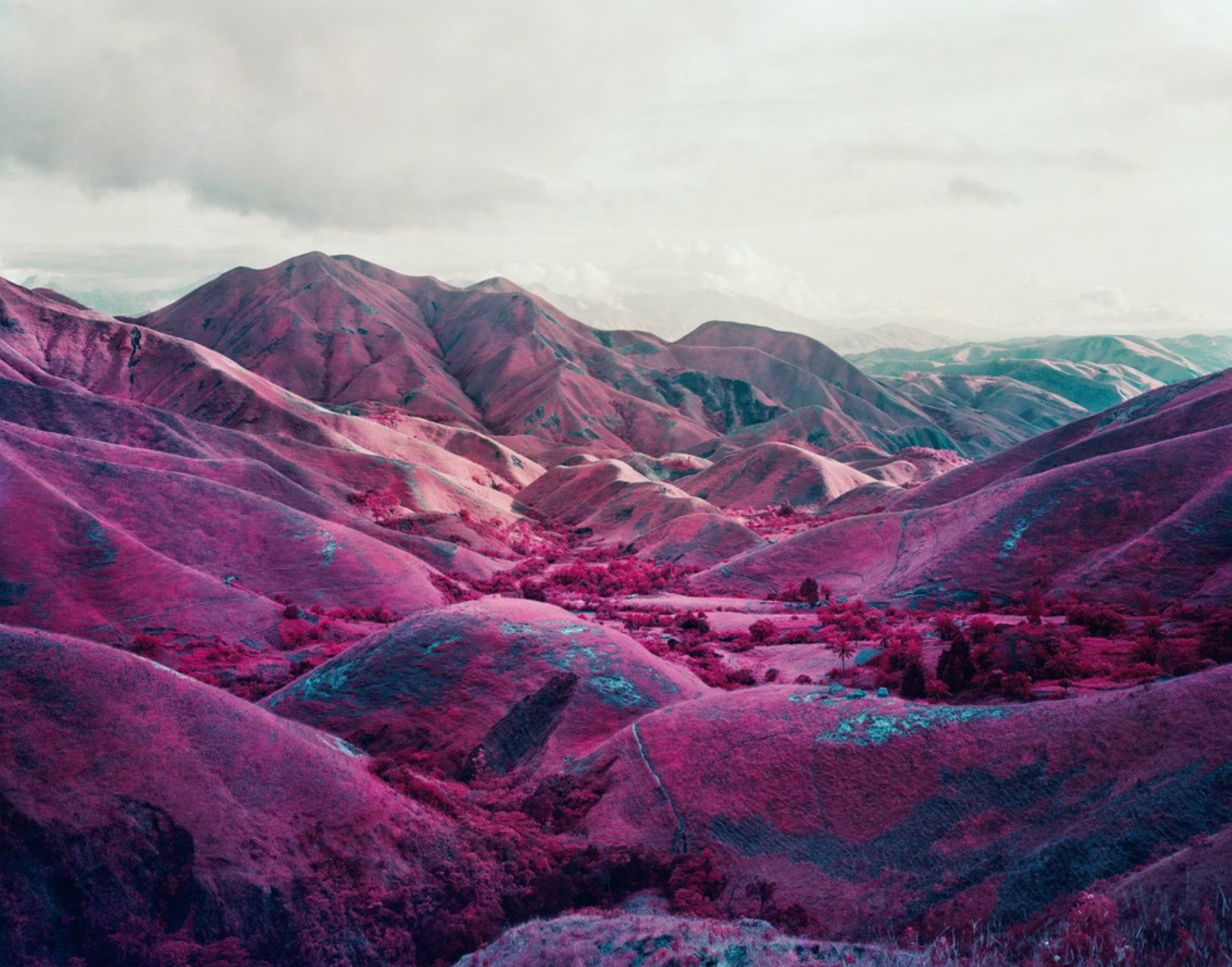CONCEPTUAL ART + WRITING CONCEPTUAL ART + WRITING
The Mind
of the
Machine
Conceptual Art
& Writing
2019 ongoing
Featured:
The Fall A/W 2020




[Short read] Utilising mechanical, digital, and human manipulation, The Mind of the Machine is an ongoing series that explores how far you can zoom into an image to create new organic forms.
[Long read] Published in The Fall A/W 2020: “Two and a half years ago, I re-read the work of Walter Benjamin: The Work of Art in the Age of Mechanical Reproduction. Benjamin (1935) speaks of natural aura as something that can be experienced from a distance; we see it from afar and absorb its wonder. We follow the ridges and shapes of the mountain range sprawled across the horizon. We see, and we feel connected. However, a natural human desire is the need to be close to the ‘object’, and mechanical reproduction through the eye of the camera lends well to this desire, translating the scene into a tangible form that the individual is able to touch, feel, own. The vast distance between the individual and the mountain range closes in with just a tool. In forcing the scene through the reproductive lens, the event itself becomes an object to hold. Yet, we cannot emulate through the photograph the aura that the naked eye and the whole being witnesses. Differentiation between the eye of the self and the eye of the camera exists within the third and second dimensions, as well as the real-time truth of the scene. With the loss of the natural aura, the scene is robbed of an element of truth.
Benjamin’s work resonates in this reproduction more intensely than the mere taking of an image. Here, a series of experiments was triggered based on the distortion of the natural aura. Within one mimicry experiment, I found a small mark that intrigued me. Through natural inquisition, I began by blowing the shape up by 400% (this is as much as the photocopier will allow at any one time). Once, and the shape became more intriguing. Twice, and it became more intricate. Thrice, and its recognisable form had been lost, but details remained. I continued delving further and further, unravelling more and more until I got kicked out of the studio that evening with a stack of paper 400 pages high. A whole series later, and I have moved my practice to the digital plane to a world of infinite content where there are no boundaries.”
[Long read] Published in The Fall A/W 2020: “Two and a half years ago, I re-read the work of Walter Benjamin: The Work of Art in the Age of Mechanical Reproduction. Benjamin (1935) speaks of natural aura as something that can be experienced from a distance; we see it from afar and absorb its wonder. We follow the ridges and shapes of the mountain range sprawled across the horizon. We see, and we feel connected. However, a natural human desire is the need to be close to the ‘object’, and mechanical reproduction through the eye of the camera lends well to this desire, translating the scene into a tangible form that the individual is able to touch, feel, own. The vast distance between the individual and the mountain range closes in with just a tool. In forcing the scene through the reproductive lens, the event itself becomes an object to hold. Yet, we cannot emulate through the photograph the aura that the naked eye and the whole being witnesses. Differentiation between the eye of the self and the eye of the camera exists within the third and second dimensions, as well as the real-time truth of the scene. With the loss of the natural aura, the scene is robbed of an element of truth.
Benjamin’s work resonates in this reproduction more intensely than the mere taking of an image. Here, a series of experiments was triggered based on the distortion of the natural aura. Within one mimicry experiment, I found a small mark that intrigued me. Through natural inquisition, I began by blowing the shape up by 400% (this is as much as the photocopier will allow at any one time). Once, and the shape became more intriguing. Twice, and it became more intricate. Thrice, and its recognisable form had been lost, but details remained. I continued delving further and further, unravelling more and more until I got kicked out of the studio that evening with a stack of paper 400 pages high. A whole series later, and I have moved my practice to the digital plane to a world of infinite content where there are no boundaries.”
The
Birth
of the
Form
Conceptual Art
& Writing
2019
Featured:
ICBQ Issue 4





Published in ICBQ 4: “The birth of the form, torn from the self and regurgitated anew. A skin, an unauthorised aura, shredded in lurid transformation. Ever encouraging of a subtle abandonment. No consequence of any kind; here is the existence of an object through which we witness the manual artefact maturing within its residence of the digital realm.
Repetitive actions and eternal sequences have become my life blood; I scan for something deeper, searching for a question of sorts within each stage of my experimentation. Answers are found through making, and subsequently, new questions emerge through observation. Here, I speak of the constant state of manipulation where my very self remains situated.”
Manifesto Collective
Conceptual
Print











I created a manifesto that rejected the confinements of the four walls we situate ourselves within. The walls that separate our very beings from the natural world. It explores the difficulties of breaking out of the space and constructs we build, and how distant we have become from our natural human draw to water.
Creating a narrative throughout the publication, the boxed text becomes progressively more fluid/warped, but is never able to break out of its confines. The publication is bound with a d-shackle (used on boats) in one corner; allowing the handler to reorganise the leaves subjectively – the simply defined structure can be disrupted with new ownership of the object. As the d-shackle is a product of our interaction with the sea, it made perfect sense to utilise this in the binding.
Creating a narrative throughout the publication, the boxed text becomes progressively more fluid/warped, but is never able to break out of its confines. The publication is bound with a d-shackle (used on boats) in one corner; allowing the handler to reorganise the leaves subjectively – the simply defined structure can be disrupted with new ownership of the object. As the d-shackle is a product of our interaction with the sea, it made perfect sense to utilise this in the binding.
The Truth
of the
Photograph
A Study on filters that Influence the Perception and Meaning of War Photography
Chapter 1:
The Power of Context
First Class Honours
--

Figure 1.
Koen WESSING. 1978. Nicaragua.

Figure 2.
Don MCCULLIN. 1968. Shell-shocked US Marine, The Battle of Hue.

Figure 3.
The Tate [online]. 2018. Don McCullin Artworks.

Figure 4.
Vincent VAN GOGH. 1890. Wheatfield with Crows.

Figure 5.
Dirk REINARTZ. 1995. Sobibór.

Figure 6.
Richard MOSSE. 2010. Nowhere to Run.
Context can be used to alter what we take from an image. Often, it sculpts our perception of captured a moment in time, acting as a filtration of information. According to Barthes (1980, p.26), a photograph possesses two states of interaction: the studium and the punctum.
The first interaction is the ‘studium’. It is the cultural, communal participation between viewers and the photograph. Observing Fig.1, we have a mutual understanding of the two subjects and can consider each to be a universally known symbol amongst humanity. The nun: an emblem of peace, purity, and guidance. The soldier: an emblem of authority, war, and death. Ordinarily, these symbols exist in separate realms, but here they somehow coexist, juxtaposed to create an unsettling image. Within the studium, meaning is interchangeable amongst viewers through shared understandings of the world. As a result of this, the photographer has limited control over how the image is perceived.
The second interaction is the ‘punctum’. That which ‘pierces’ and disrupts the first. It is something that grasps the reader and 'pricks like a pin’ (Barthes, 1980, p.26). Contrasting to the studium, the punctum is absolute in subjectivity. What a person sees in an image is determined by the life that has shaped them. A punctum can be a memory, a feeling, a sight of one’s own past that is applied directly to the object. Photographs are vulnerable to individual interpretation, which in turn alters the meaning of the photograph on a personal level. Meaning changes, from eye to eye, ungovernably.
The self as spectator aligns finely with the self as centre. ‘When we ‘see’ a landscape, we situate ourselves in it. If we ‘saw’ the art of the past, we would situate ourselves in history.’ (Berger, 1973, p.11). We may not imagine ourselves in situ in the literal sense, what is meant is that everything we witness is tainted by our own thoughts and feelings; our own history. This is not surprising considering humans are self-centric beings. Each individual in this world has only ever experienced their own history, and has done so through their own eyes. ‘The visible world is arranged for the spectator as the universe was once thought to be arranged by God.’ (Berger, 1973, p.16). Perhaps problematic, perhaps not, a certain translation of information can be lost when a viewer rearranges a photograph to fit with their unrepeatable history.
Talking about the reproduction of a painting through the camera’s lens, Berger (1973, p.19) stresses that the process is capable of destroying a uniqueness held by the painting, causing initial meaning to splinter into many more meanings. ‘The painting enters each viewer’s house. There it is surrounded by [their] wallpaper, [their] furniture, [their] memories. It enters the atmosphere of [their] family.’ When we address the wider picture, we see beyond the edges of the photograph. Where the image meets the wall, outwards expanding to the framing of the room, placed in relation to the ornaments fo the room. The scene of the photograph translates into an object which then exists within a scene. When we view Don McCullin’s ‘Shell-shocked US Marine, The Battle of Hue’ (Fig.2), we see not the image of war, but the image of a self situated in something existing far beyond the edges of the photograph. A man, broken by what lies beyond. We might see the destruction of ourselves or loved ones through the tunnels of vacant eyes, reverting to a numb, child-like state. However, when we observe the same image situated in a collection (Fig.3), our engagement is transformed. Presented with a sequence of stories that have not interacted in real-time, the viewer might look at one in relation to another, stitching them together to structure a narrative. How does the still vulnerability of the shell-shocked marine in the Vietnam War come to find the suffering woman in Cyprus who aches sorrow for her husband? Two psychological states weaved together begin to provide thought for a greater narrative. The image is no longer a single, pure entity. Its own meaning challenges the meaning of the next, whose meaning was challenged by the image before it. What we must remember is that these particular photographs are strung together through one commonality: the hand of the photographer, not reality.
When we pair visual and written languages, each contextualise one another, increasing the legibility of meaning for viewers. However, this also acts as a narrowing tool. There may be something unseen in the image, a hidden layer signalling towards something else that needs to be contextualised with words. And vice versa. Berger (1980, p.28) uses Vincent Van Gogh’s ‘Wheatfield with Crows’ (Fig.4) as a demonstration of the shockwave that can hit with just a few words. Without the context of the painting’s history, viewers are free to sculpt and speculate about the painting according to their individual centre-point. Captions act almost like a filter: although personal interpretation is not eradicated, the painting is almost seen with tunnel vision. Through these words, something out of view makes its way into the viewer’s periphery, revealing an unknown truth and transforming entirely how they view the painting.
In Fig. 5 there is clearing in a forest (perhaps not entirely relevant, it must be noted that there are some strong visual overlaps between the structure of figure 4 and figure 5). Drawn to a falsified ‘centre’ that does not align with the true centre, exposure provides guidance to trees cutting shapely through sky and sparse, sandy areas of grass. New grass grows, elongating the question of what once was. Reflecting on this dark, dingy photograph, we cannot accurately pinpoint its purpose (Baer, 2002). Only through the context of written language can we understand the historical significance of what Reinartz has captured In Fig. . Upon reading the caption, there is a moment of sudden realisation when everything changes. What once resembled a zephyr through broken grass now screams of man-made death. Sudden studium through the caption provides us with a communal understanding that this was once so much more. Incapable of showing the historic context of the scene, some photographs may need context to guide and shape a better understanding.
INFRA, a photo series by Richard Mosse (2011), depicts conflict in the Democratic Republic of Congo using discontinued infrared military film (Kodak Aerochrome). In Figure 6, we witness in a dream-like state lurid pink hills sprawling infinitely past the margins of the photograph. Disclosing something that the eye is unable to detect, Mosse explores an alternative reality through surreality.‘Nowhere to run’, (the title of Figure 6) contrasts immensely to the atmosphere of the photograph. What this image depicts is a grassland draped in lurid blankets of pink. It is easy to get caught up in the beauty of the image and forget the brutality. But war does not come with the delicate scent of pink. Death, conflict, and the 7.4 million war-related deaths in the Congo since 1998 (Mosse, 2017) feel like a fleeting thought. There is a certain falsity created by the ‘filter’ of the film, and it could be argued that the meaning of a scene is transformed from photojournalism to art-form; here, we see the world through another eye. Not the eye of the self, nor the eye of the photographer, but the eye of the film.